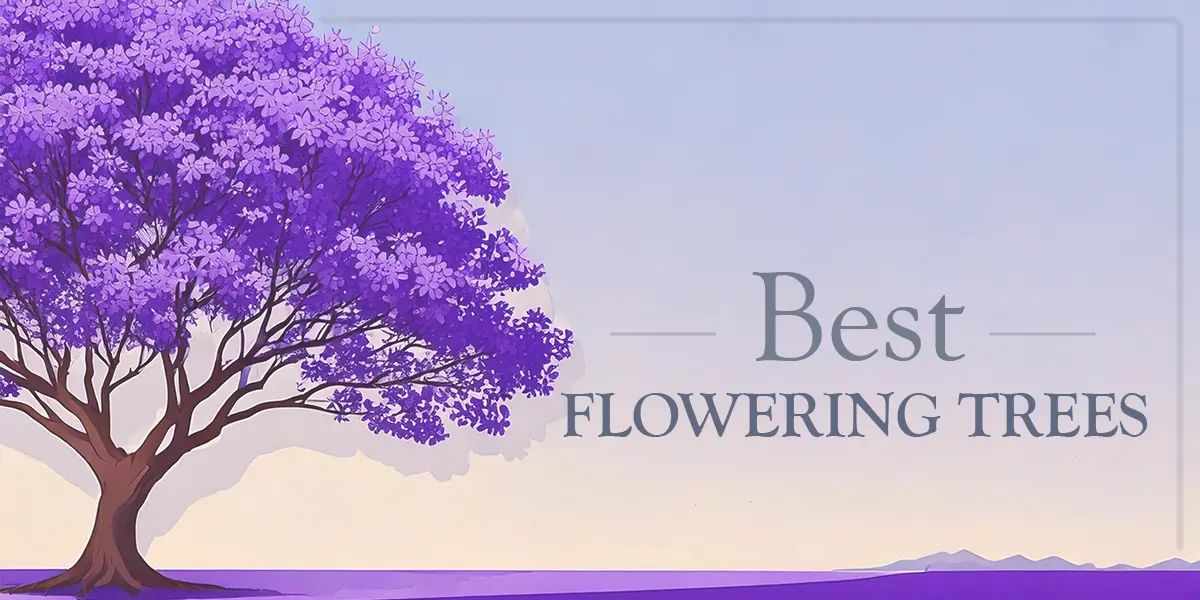Plumeria? Check.
Jacaranda? Check check.
These tropical trees thrive in Southern California’s Mediterranean climate.
That said, some trees fare much better than others and reward the attentive LA gardener with spectacular spring and early summer flowers.
Flowering trees do more than beautify:
- They lower ambient temperatures and reduce cooling costs.
- Many flowering trees attract pollinating insects like bees and butterflies.
- Some species are drought-resistant and flourish with minimal care.
Now, let’s explore some of the best trees to transform your drab Southern California landscape into a riot of brilliant spring color.
1. Jacaranda (Jacaranda mimosifolia)
Jacarandas, which line many Southern California streets, create spectacular canopies of purple-blue blooms. Introduced to the area in the 19th century, these native South Americans became local favorites for their ornamental value and ability to adapt.
- Bloom Time: Late spring to early summer.
- Key Features: Deciduous, grows up to 40 feet tall, attracts pollinators.
- Care Tips: Requires full sun and well-drained soil. Once established, it’s drought-tolerant.
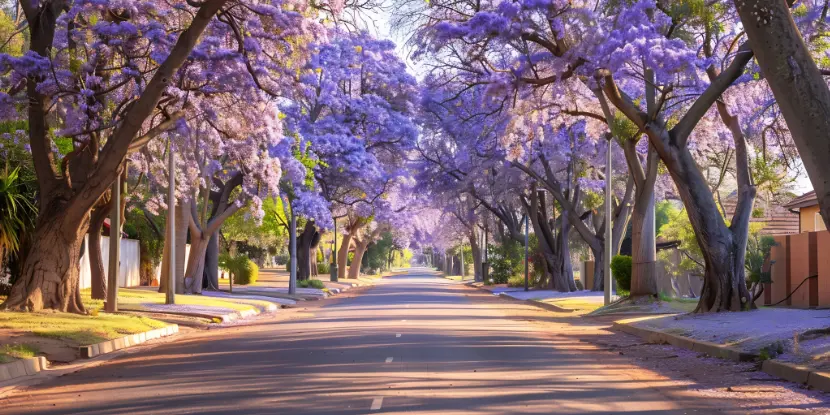
Flowering jacaranda trees line a Southern California street.
2. Desert Willow (Chilopsis linearis)
Are you thinking of xeriscaping? Desert willow is a low-water, low-maintenance tree that bears pink, trumpet-shaped flowers with a tropical feel.
- Bloom Time: Late spring through early fall.
- Key Features: Drought-tolerant, grows 15–30 feet tall, excellent for small spaces.
- Care Tips: Thrives in full sun and sandy or gravelly soil.

Desert willow is a low-water, low-maintenance tree that bears pink, trumpet-shaped flowers.
3. Magnolia (Magnolia grandiflora & Magnolia stellata)
Magnolias, with their large, fragrant flowers, lend Southern elegance to your garden. Popular varieties include the Southern magnolia (perfect for larger spaces) and the Star magnolia (ideal for smaller yards).
- Bloom Time: Spring to early summer.
- Key Features: Evergreen varieties are available, striking white or pink blooms.
- Care Tips: Prefers well-drained, slightly acidic soil and plenty of sunlight.
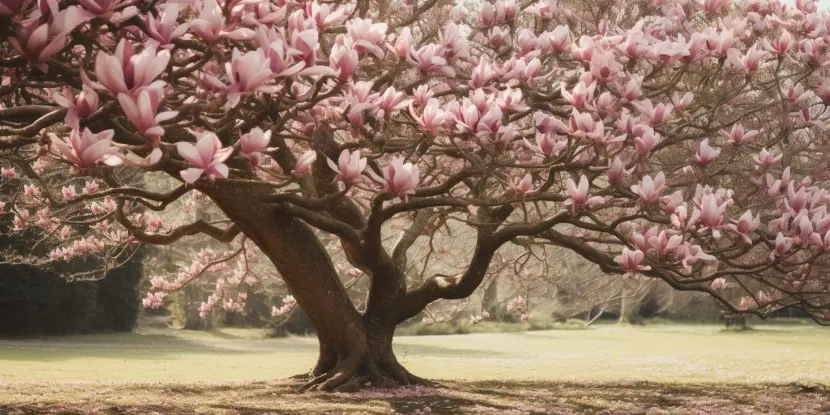
Magnolias bring Southern elegance to your landscape.
4. Crape Myrtle (Lagerstroemia indica)
Crape myrtles have an unusually long blooming season. Their radiant flowers come in a full palette of colors, including pink, red, and purple.
- Bloom Time: Summer through early fall.
- Key Features: Grows 20–30 feet tall; excellent for year-round interest with attractive bark and foliage.
- Care Tips: Likes full sun and well-drained soil; prune in late winter or early spring for optimal flowering.
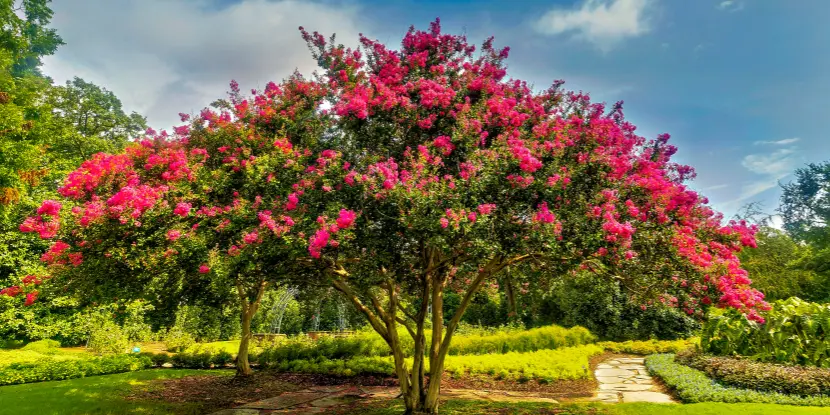
Crape myrtles have an unusually long blooming season.
5. Flowering Dogwood (Cornus florida)
Native to the East Coast, flowering dogwoods can easily handle mild Los Angeles winters. They bloom in shades of pink, white, and red before producing ornamental berries in the fall.
- Bloom Time: Spring through early summer.
- Key Features: Grows up to 25 feet tall and wide, attracts birds and pollinators with fruit and flowers.
- Care Tips: Prefers partial shade and regular watering; mulch around the base to keep roots cool.
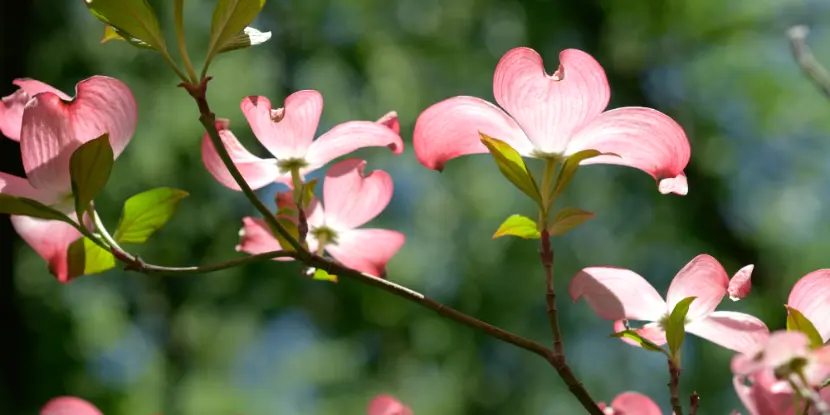
Dogwoods bloom in shades of pink, white, and red before producing ornamental berries in the fall.
6. Plumeria (Plumeria rubra)
Plumerias are a tropical treat with fragrant, show-stopping flowers. They come in various colors and can be trained as small trees or grown in containers.
- Bloom Time: Late spring through summer.
- Key Features: Drought-tolerant once established; ideal for smaller gardens or patios.
- Care Tips: Requires full sun and well-drained soil; water sparingly during winter dormancy.
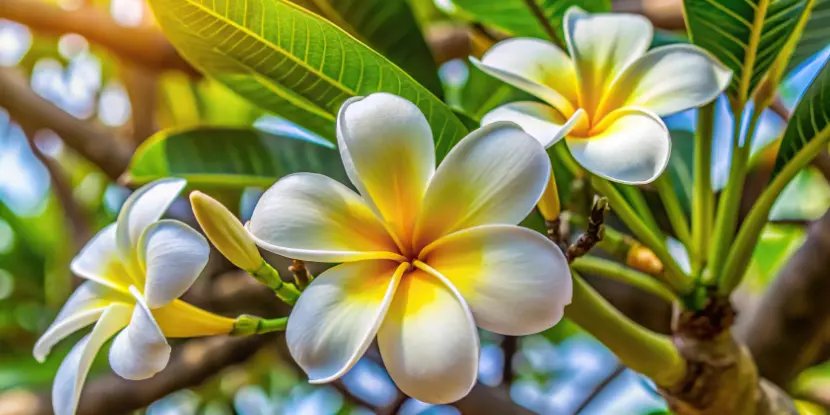
Plumeria is a tropical tree that does well in Southern California’s mild climate.
7. Palo Verde (Parkinsonia spp.)
These desert denizens are prized for their stunning yellow blooms and airy green foliage. They’re extraordinarily drought-tolerant and have some of the deepest taproots in the tree world.
- Bloom Time: Late spring to early summer.
- Key Features: Grows 20–30 feet, extremely drought-tolerant.
- Care Tips: Requires full sun and thrives in poor, well-drained soils.
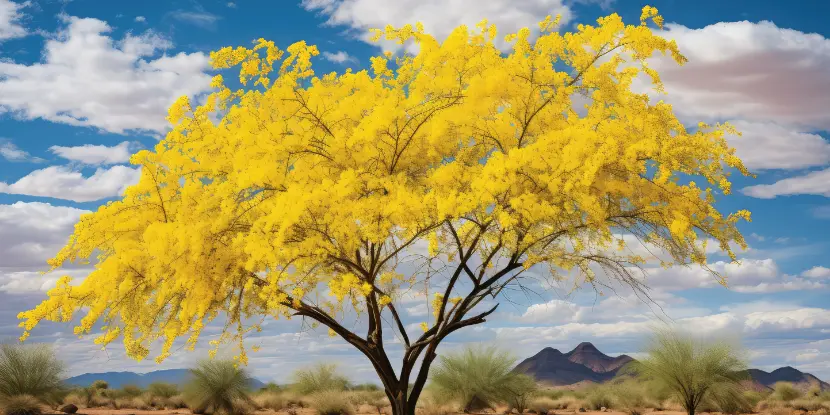
Palo Verde has a deep taproot that makes it ideal for xeriscapes.
8. Western Redbud (Cercis occidentalis)
Native to California, the Western Redbud’s showy pink-purple blooms make it a natural fit for LA landscapes.
- Bloom Time: Early spring.
- Key Features: Native species, grows up to 20 feet, supports wildlife.
- Care Tips: Adapts to various soils but prefers full sun and occasional watering.
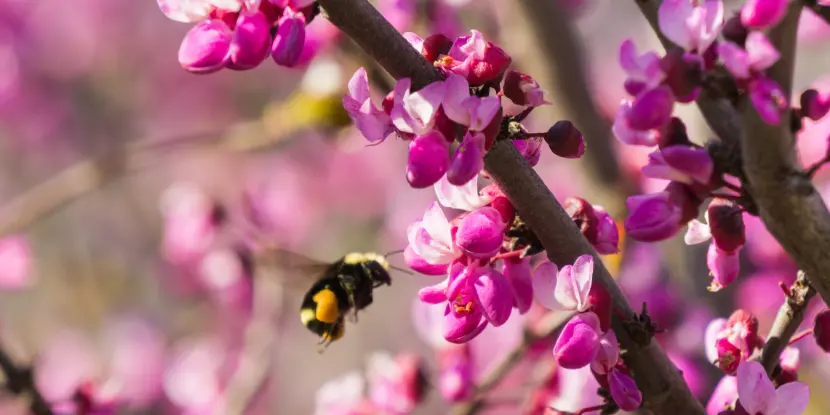
Western Redbud is a native California plant and a magnet for pollinating insects.
9. Ornamental Pear (Pyrus calleryana)
Ornamental pear trees, like the Bradford pear, bring springtime charm with dense clusters of white blossoms.
- Bloom Time: Early spring.
- Key Features: Grows up to 30 feet; displays vivid fall foliage.
- Care Tips: Thrives in full sun and tolerates a variety of soils.
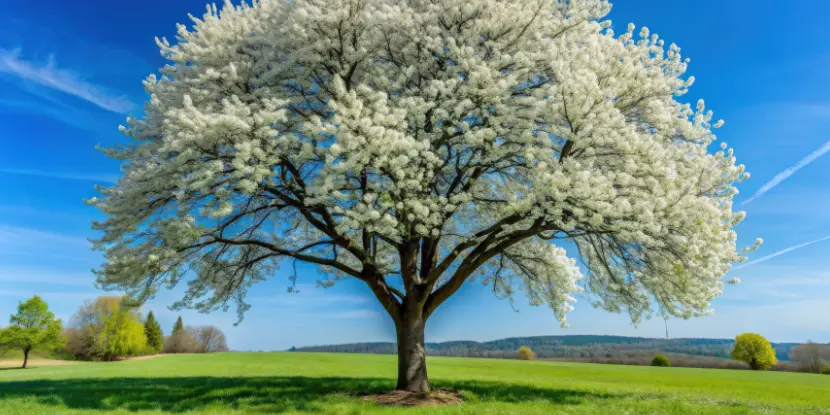
A flowering Bradford pear tree.
10. Chitalpa (Chitalpa tashkentensis)
A hybrid of catalpa and desert willow, the chitalpa produces trumpet-shaped flowers in shades of pink or white.
- Bloom Time: Late spring to early fall.
- Key Features: Grows 20–30 feet tall, drought-tolerant.
- Care Tips: Thrives in full sun and needs little water once established.
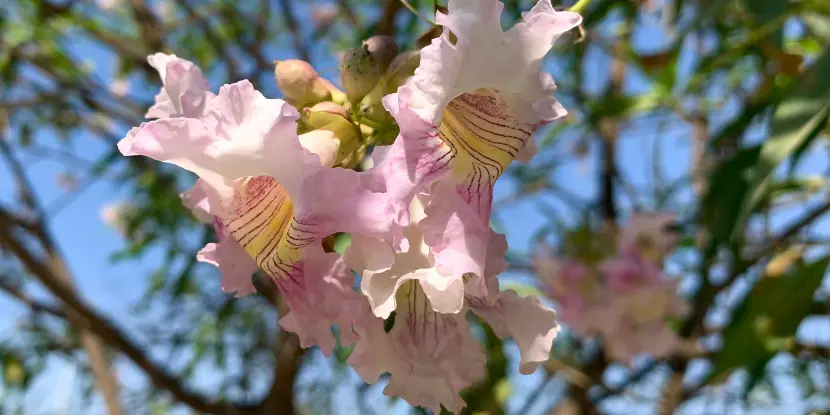
The chitalpa produces trumpet-shaped flowers in shades of pink or white.
11. Coral Tree (Erythrina spp.)
The coral tree is a Central American species known for its bold, bright red blossoms, often resembling coral formations.
- Bloom Time: Late winter to spring.
- Key Features: Grows up to 40 feet tall; unique red flowers.
- Care Tips: Requires full sun and thrives in sandy soil.
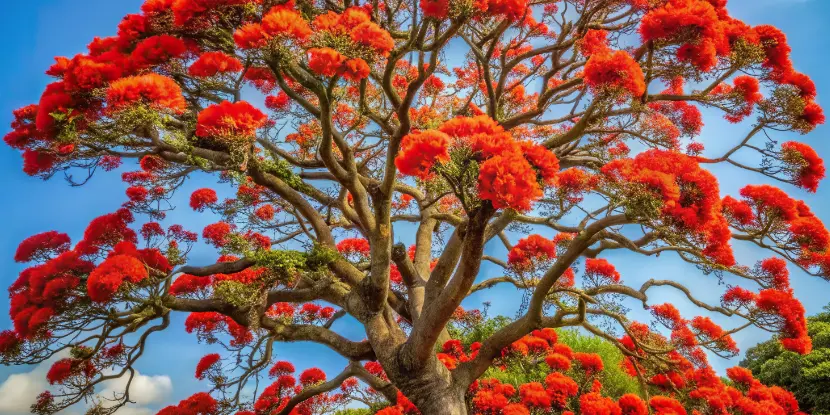
A magnificent coral tree in full bloom. It doesn’t get better than this.
12. Golden Rain Tree (Koelreuteria paniculata)
The golden rain tree dazzles with its yellow flower clusters and papery seed pods, adding year-round visual interest.
- Bloom Time: Late summer to early fall.
- Key Features: Grows up to 25 feet; tolerates heat and drought.
- Care Tips: Prefers full sun and well-drained soil.
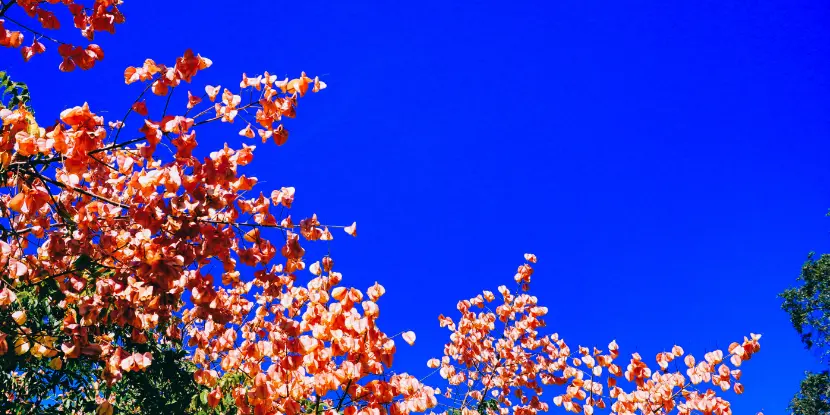
The golden rain tree blooms year-round with yellow flower clusters and papery seed pods.
13. Bottlebrush (Callistemon spp.)
Bottlebrush trees are native Californians loved for their unusual, red, bottle-brush-shaped flowers that attract hummingbirds and bees.
- Bloom Time: Year-round in warmer climates.
- Key Features: Grows 10–15 feet tall, evergreen, and pollinator-friendly.
- Care Tips: Thrives in full sun and well-drained soil with occasional watering.
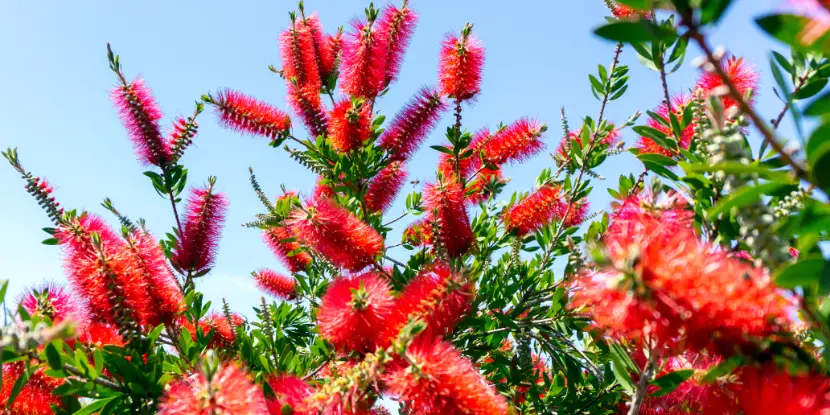
Bottlebrush trees flower all year long in most areas of Southern California.
FAQs: Flowering Trees for Los Angeles
Q: What types of soil do flowering trees prefer?
Each tree has its preferences, but most flowering trees listed here prefer well-drained soils that are not too wet or compacted. Some may also have specific pH requirements. Always research the needs of your chosen tree before planting to ensure optimal growth and health.
Q: Do these trees require a lot of maintenance?
Like any plant, flowering trees benefit from regular care and pruning. Many trees listed here are drought-tolerant once established and need minimal maintenance in Los Angeles’ climate.
Q: Can all of these trees grow in small spaces?
Some trees, such as the Star magnolia and bottlebrush, are suitable for smaller yards or containers. However, others may require more room to grow to their full potential.
Q: How do I choose which flowering tree is right for my garden?
When selecting a flowering tree for your garden, consider bloom time, size, care requirements, and overall aesthetic. You can also consult with local nurseries or gardening experts for personalized recommendations based on location and needs.
Q: Are these trees native to California?
Some listed trees, such as the Western Redbud and Bottlebrush, are native to California, while others come from other parts of the world. All trees in this blog can thrive in Los Angeles’ climate and bring beauty to your landscape.

